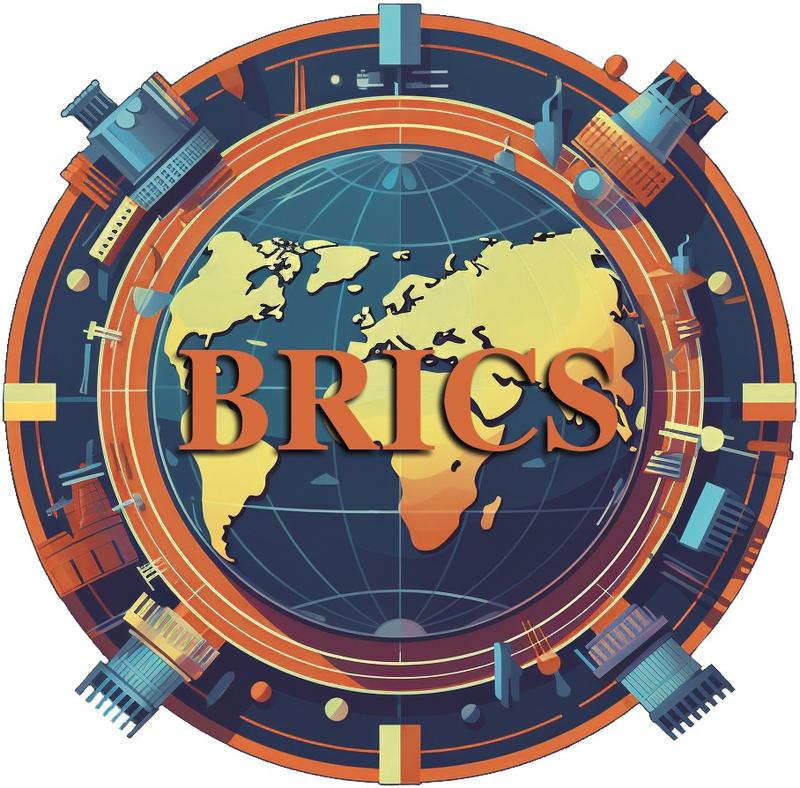Bloc’s growing impact in contrast to fading fortunes of West amid attempt to stifle China, Russia
 (WANG XIAOYING / CHINA DAILY)
(WANG XIAOYING / CHINA DAILY)
The 2023 BRICS Summit, set to take place in Johannesburg, South Africa, from Aug 22 to 24, is expected to mark a major step forward in the group’s development and global impact.
The bloc was established in 2010 by four countries — Brazil, Russia, India, and China — which were important economic and political powers in regional integration groups. South Africa was added in 2011.
The establishment of BRICS, alongside several other important new international institutions, in the new millennium came amid the reluctance of Western powers to increase the role of emerging powers in the architecture of global governance, including the Bretton Woods institutions and the World Trade Organization; the need to compensate for the lack of momentum and the unjust conditionalities of existing multilateral institutions; and the need to give an impetus to South-South economic integration and better serve the needs of the Global South.
Until recently, BRICS had maintained a relatively low profile on the world stage. It was conceived as a dialogue and cooperation platform for a group of large emerging economies with shared values regarding the international system (mutual respect and understanding, equality, solidarity, openness, inclusiveness, and consensus).
A very important development was the establishment of the New Development Bank in 2014 to mobilize resources for infrastructure and sustainable development projects in BRICS and other emerging and developing countries. Diplomatically, it was said to “supplement” what was, in fact, insufficient provision of international development finance by existing multilateral financial institutions.
In 2015, BRICS announced engagement with the Eurasian Economic Union (EAEU) and the Shanghai Cooperation Organization. In 2016, its efforts contributed to the implementation of the International Monetary Fund quota reform, and in 2017, it started to consider dialogue and cooperation with non-BRICS and potential “BRICS plus” countries to make BRICS “the most influential platform for South-South cooperation in the world”.
By 2023, BRICS had quietly made progress in areas such as trade, investment, sustainable development, financial integration, infrastructure connectivity — including additional and alternative trade and transport routes — and science, technology and innovation (the digital economy, space exploration, and vaccine development), among other things.
In 2022, the combined economic output of the five BRICS members, measured in purchasing power parity, exceeded for the first time that of the US-led G7.
At market exchange rates in 2021, the BRICS members accounted for 26.1 percent of global GDP and 53.1 percent of the world population, compared with 43.5 percent and 9.8 percent, respectively, for the G7.
However, GDP is misleading. If one examines the production of goods, energy and raw materials, and food, the BRICS countries account for 36.6 percent, 28.3 percent, and 53.1 percent of world output compared with 35.5 percent, 28.1 percent, and 14.1 percent in the case of the G7.
More than 40 countries have expressed an interest in joining and if other large countries in the Global South — such as Iran, Indonesia, and Saudi Arabia — are admitted to the group at the South African summit, the group’s economic and demographic significance will increase dramatically and reinforce a reorientation of trade and investment and the integration of producers from “BRICS Plus” economies into regional and global value chains.
The summit is also important because of the need to reduce dependence on a US dollar-centered international financial system, for at least three reasons: the exploitation of international seigniorage and the “exorbitant privilege” of printing dollars, the instability stemming from the accumulation of an unsustainable mountain of debt, and the use of the dollar and international financial architecture unilaterally to sanction countries.
At present, despite a downtrend, most trading is still denominated in dollars and must transit through a US bank and the SWIFT system.
The BRICS members have underscored the importance of encouraging the use of local currencies in financial transactions between BRICS countries and their trading partners. A common payment card system may complement (but not replace) existing national payment card systems. Connections may be established between Chinese, Indian, and Russian financial messaging systems to operate alongside the Western-controlled SWIFT system.
BRICS, in conjunction with the EAEU, has started to explore the possibility of creating a parallel regional and possibly global reserve currency based on a basket of commodities and BRICS currencies. If established, it will permit the issuing of bonds to finance development projects.
The recent progress of BRICS contrasts sharply with the difficulties the West has encountered in its attempts to strangle Russia economically and politically and to contain China. More broadly it may signify the coming to the end of an era lasting more than 500 years in which Western nations have dominated world affairs and the emergence of a new multipolar world characterized by more equitable and democratic rules and a stronger quest to seek collective solutions to global problems.
The author is emeritus professor of the University of Sussex and a visiting professor at the Institute of Geographical Sciences and Natural Resources Research at the Chinese Academy of Sciences. The author contributed this article to China Watch, a think tank powered by China Daily.
The views do not necessarily reflect those of China Daily.


